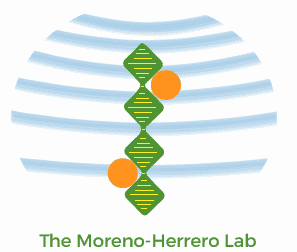Human HELB is a processive motor protein which catalyses RPA clearance from single-stranded DNA
Silvia Hormeño, Oliver J Wilkinson‡, Clara Aicart-Ramos, S Kuppa, E Antony, Mark S Dillingham*, and Fernando Moreno-Herrero F*.
Abstract: Human DNA helicase B (HELB) is a poorly characterized helicase suggested to play both positive and negative regulatory roles in DNA replication and recombination. In this work, we used bulk and single-molecule approaches to characterize the biochemical activities of HELB protein with a particular focus on its interactions with Replication Protein A (RPA) and RPA–single-stranded DNA (ssDNA) filaments. HELB is a monomeric protein that binds tightly to ssDNA with a site size of ∼20 nucleotides. It couples ATP hydrolysis to translocation along ssDNA in the 5′ to 3′ direction accompanied by the formation of DNA loops. HELB also displays classical helicase activity, but this is very weak in the absence of an assisting force. HELB binds specifically to human RPA, which enhances its ATPase and ssDNA translocase activities but inhibits DNA unwinding. Direct observation of HELB on RPA nucleoprotein filaments shows that translocating HELB concomitantly clears RPA from ssDNA. This activity, which can allow other proteins access to ssDNA intermediates despite their shielding by RPA, may underpin the diverse roles of HELB in cellular DNA transactions.
LINK.
